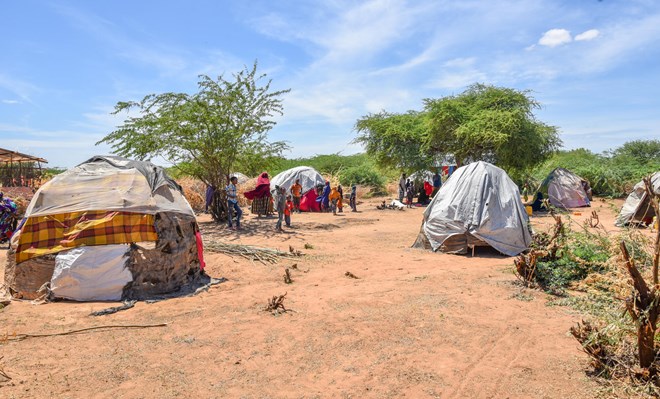
Tuesday October 25, 2022
from MARIA MACHARIA

Makeshift shelters that many new arrivals and returning refugees call home in Dagahaley. Kenya, May 2021. © PAUL ODONGO/MSF
NAIROBI, (CAJ News) – THOUSANDS are at risk of disease as the number of refugees swells at Kenya’s Dadaab Refugee Complex, one of the world’s most populated refugee centres in the world.
The camps, home to more than 233 000 refugees, have seen thousands of people arrive since January, with hundreds more arriving every week.
A majority of the refugees are from neighbouring Somalia, are escaping a crippling drought, violence and continuing conflict.
Many of those arriving are coming from southern Somalia, where measles and cholera outbreaks have occurred recently.
Outbreaks of these diseases have already been confirmed in Dadaab.
Last week, MSF teams recorded three measles cases and two suspected cases of cholera in Dagahaley, one of the three refugee camps that make up the Dadaab Refugee Complex.
Adrian Guadarrama, Médecins Sans Frontières (MSF’s)/Doctors Without Borders MSF’s deputy programme manager for Kenya, said with low vaccination coverage in Somalia, and no system in place to receive and screen the newly arrived people in Kenya, infectious diseases could spread rapidly.
“This is putting people living in and around the camps, particularly children, at heightened risk of getting ill,” he said.
“Even a few isolated cases of measles and cholera can cause a full-blown outbreak in overcrowded camp settings, where clean drinking water is scarce and sanitation and hygiene are poor,” Guadarrama said.
According to data collected by our outreach teams, the number of arrivals from Somalia to Dagahaley alone has doubled from August to September, reaching over 800 people.
This number is estimated to keep increasing steadily in the coming weeks and months.